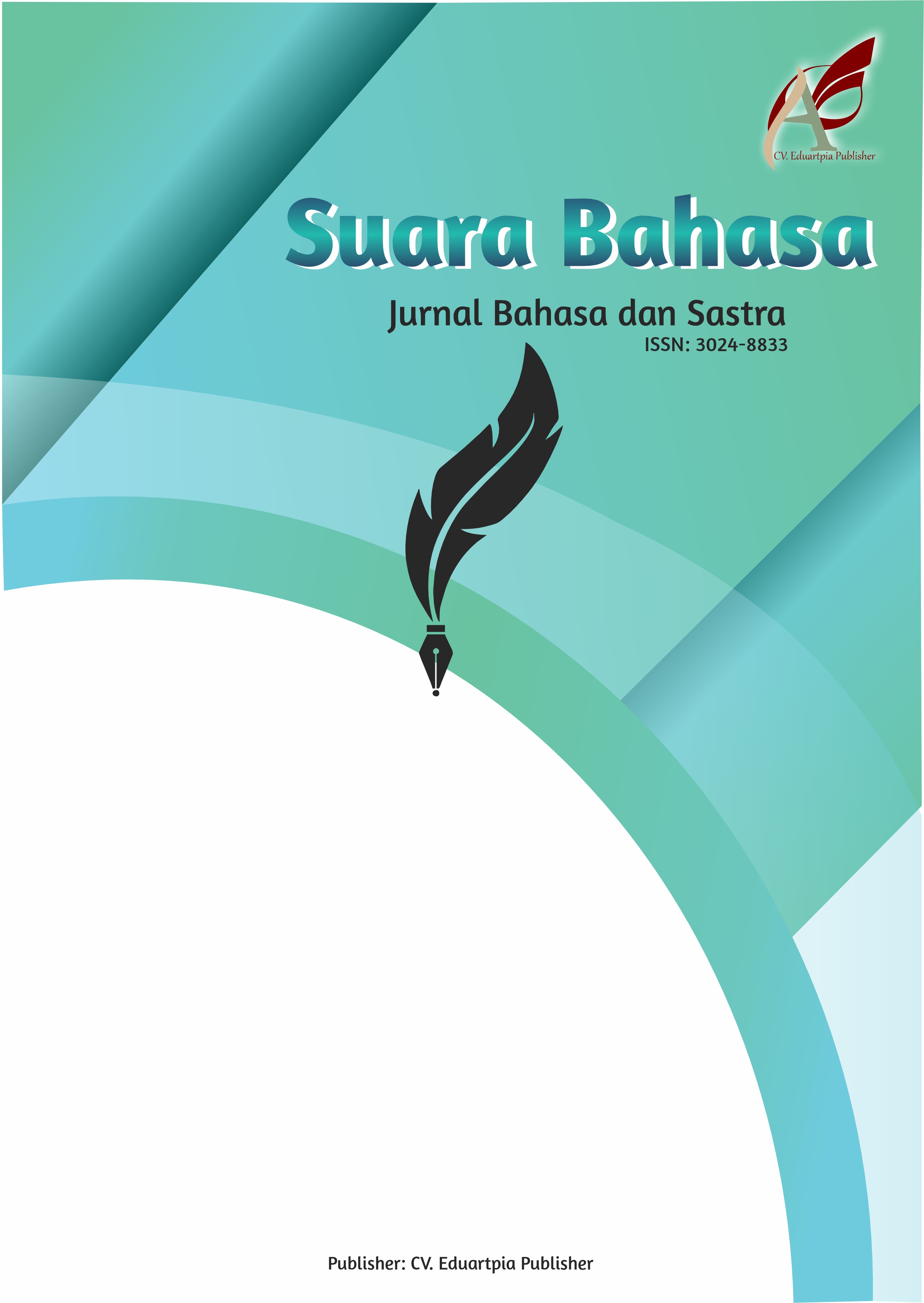Mistisisme Keris dan Budaya Jawa dalam Novel Wigati Karya Khilma Anis
Keywords:
Novel, building elements, keris mysticism, Javanese cultural valuesAbstract
This study aims to describe: (1) the building blocks of the novel; (2) keris mysticism; and (3) Javanese cultural values contained in the novel Wigati by Khilma Anis. This research is a qualitative descriptive study. The approach used is a literary anthropological approach. Sources of data obtained from documents. Data collection techniques with documentation. The sampling technique used was purposive sampling technique. Data analysis was carried out by interactive data analysis. The validity of the data using theoretical triangulation. Based on the results of data analysis obtained 3 conclusions. First, the building blocks of the novel are intrinsic and extrinsic elements. Intrinsic elements include; (a) major themes about the struggle of a woman's life, minor themes, among others, the problem of kris, Javanese culture problems, love problems; (b) characters and characterizations, the main characters are Wigati (quiet, steadfast, patient odd), and Manik (kind, cheerful, caring and considerate), additional characters are Hidayat Jati (kind, intelligent, outgoing and responsible), Kang Makhrus ( kind, considerate, authoritarian), Mrs. Nyai Zulfa (kind, gentle, compassionate), Abah (firm, kind), Grandma (kind, calm, authoritative and wise), Mrs. Kinanti (kind, caring and compassionate), Ali Murtadho (kind, considerate and wise, responsibility); (c) setting: setting includes place, time, atmosphere and social setting; (d) groove: mixed; (e) point of view: mixed; (f) the message in this novel is about the dangers and effects of unregistered marriage, which means that women must have self-respect regarding unregistered marriages. Extrinsic elements include; (a) the author's biography; (b) background of creation; (c) socio-cultural conditions; (d) cultural circumstances. Both the mysticism of the keris and Javanese culture, a review of literary anthropology, is about the keris that must be brought together and the myths and customs from the time of the ancestors.
Keywords: Novel, building elements, keris mysticism, Javanese cultural values
References
Moleong, L. J. (2006). Metodologi Penelitian Kualitatif. Bandung: PT Remaja Rosdakara.
Nurgiyantoro, B. (2005). Teori Pengkajian Fiksi. Yogyakarta: Gajah Mada University Press.
Searle, J. R. (1996). Speech Act: An Thesis on the Philosophy of Language. New York: Combridge University Prees.
Sugiyono. (2016). Metode Penelitian Kuantitatif Kualitatif. Bandung: Alvabet CV.
Untara, W. (2012). Tesaurus Bahasa Indonesia. Yogyakarta: Indonesia Tera.
Anis, Khilma. 2019. Wigati (Lintang Manik Woro). Yogyakarta: Telaga Aksara
Kuntadi, K. (2019). Eksistensi Keris Jawa dalam Kajian Budaya. TEXTURE: Art & Culture Journal, 2(1), 49-60.
Laksono, P. M. (2013). Kontekstualisasi (Pendidikan) Antropologi Indonesia. Komunitas: International Journal of Indonesian Society and Culture, 5(1).
Purnomo, M. H. (2010). Menguak Budaya dalam Karya Sastra: Antara Kajian Sastra dan Budaya. Endogami: Jurnal Ilmiah Kajian Antropologi, 1(1), 75-82.
Rachim, R. L., & Anshori, H. F. (2007). Nilai budaya Jawa dan perilaku nakal remaja Jawa. Indigenous: Jurnal Ilmiah Psikologi, 9 (1).
Saliyo. (2012). Konsep dalam Diri Budaya Jawa. Jurnal Buletin Psikologi hal 26-35.
Syahrizal, dkk. (2013). Kajian Sosiologi Sastra dan Nilai Pendidikan dalam Novel “Tuan Guru” karya Salman Faris. Jurnal Pendidikan Bahasa dan Sastra. (hal 54-68).
Teng, Akkase Bahar. (2017). Filsafat Kebudayaan dan Sastra (dalam Prespektif Sejarah) Jurnal Ilmu Budaya Universitas Hasanudin.
Downloads
Published
How to Cite
Issue
Section
License
Copyright (c) 2023 Prissilia Prahesta Waningyun, Mohamad Afi

This work is licensed under a Creative Commons Attribution-ShareAlike 4.0 International License.
Authors retain copyright and grant the journal right of first publication with the work simultaneously licensed under a Creative Commons Attribution-ShareAlike 4.0 International License that allows others to share the work with an acknowledgment of the work’s authorship and initial publication in this journal















